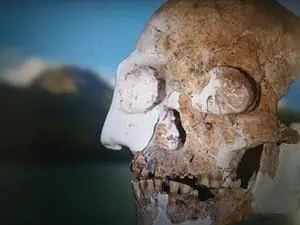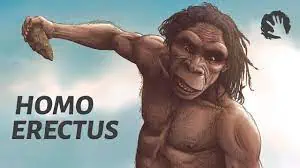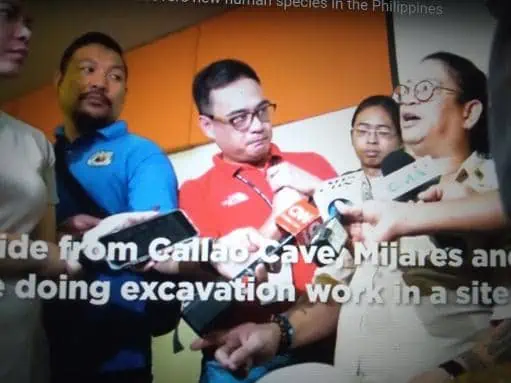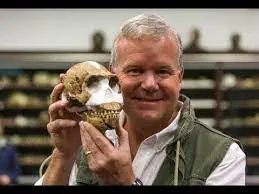Red Deer Cave people, new study fits Anatomically Modern Humans, but mystery lineage may linger
 In 1989 a skull cap was discovered along with two femur bones in a cave in China’s Yunan Province. Found among a bevy of extinct large red deer bones, incomplete skeletons of three hominins. They were dated to 14,000 years ago.
In 1989 a skull cap was discovered along with two femur bones in a cave in China’s Yunan Province. Found among a bevy of extinct large red deer bones, incomplete skeletons of three hominins. They were dated to 14,000 years ago.
From Interesting Engineering, July 18,
Native Americans may have had roots in Southern China, study reveals
The skull was shaped like that of Neanderthals, while the brain was smaller than modern humans. Hence it got the anthropologists thinking that the individual belonged to an archaic human species or to a hybrid community consisting of both archaic and modern humans…
Genome sequencing revealed that the individual belonged to an extinct species of modern humans whose descendants are now found in East Asia, the Indo-China peninsula, and Southeast Asian islands.
As SciNews explains, “anthropologists had thought the skull probably belonged to an unknown archaic human species that lived until fairly recently or to a hybrid population of archaic and modern humans.”
As EarthMagazine noted in 2016, the researchers believed the various bones discovered, particularly the femur, “appear to have been similar to — although far smaller than — Homo habilis and Homo erectus, suggesting it could indeed be a new species.”
Peter Schouten, one of the lead researchers on the team that discovered the fossils via The Conversation, 2015,
Our work shows that the thigh bone strongly resembles very ancient species like early Homo erectus or Homo habilis, which lived around 1.5 million years ago or more in Africa.
A team of Chinese researchers recently completed DNA analysis of the skull cap. The researchers including Xiaoming Zhang, Xuejing Ping and Chunmei Lei, just published their findings, July 14, Cell, Current Biology,
A Late Pleistocene human genome from Southwest China
 Here, we sequenced the genome of a Late Pleistocene hominin (MZR), dated ∼14.0 thousand years ago from Red Deer Cave located in Southwest China, which was previously reported possessing mosaic features of modern and archaic hominins. MZR is the first Late Pleistocene genome from southern East Asia.
Here, we sequenced the genome of a Late Pleistocene hominin (MZR), dated ∼14.0 thousand years ago from Red Deer Cave located in Southwest China, which was previously reported possessing mosaic features of modern and archaic hominins. MZR is the first Late Pleistocene genome from southern East Asia.
Our results indicate that MZR is a modern human who represents an early diversified lineage in East Asia. The mtDNA of MZR belongs to an extinct basal lineage of the M9 haplogroup, reflecting a rich matrilineal diversity in southern East Asia during the Late Pleistocene.
Note – MZR refers to Mengzi Ren. Mengzi = name of the region, “Ren” meaning people in Chinese.
The research found similar levels of Red Deer Cave admixture from Neanderthals and Denisovans to other East Asians.
The estimated introgression levels from archaic humans in the MZR genome are ∼1.29% for Denisovan ancestries and ∼1.27% for Neanderthal ancestries…
Homo erectus, the mystery genetic lineage in the Red Deer Cave people?
However, the researchers go on to acknowledge that the Red Deer Cave people, may indeed have some enigmatic archaic lineages. Continuing:
we cannot completely rule out the possible existence of archaic alleles in the MZR genome introgressed from Neanderthal/Denisovan or unknown archaic hominins…
That mystery archaic hominin admixture could be Homo erectus.
From QuantaMagazine, 2019,
Fossil DNA Reveals New Twists in Modern Human Origins
Modern humans and more ancient hominins interbred many times throughout Eurasia and Africa, and the genetic flow went both ways…
When the team [led by Adam Siepel, a quantitative biologist at Cold Spring Harbor Laboratory in New York] looked at the Denisovan genome, they found fragments of DNA in it from an even earlier hominin, vestiges of some population whose own genome has not been found or sequenced. It might have been Homo erectus, which split off from the ancestors of modern humans and spread across Eurasia about 1 million years ago. The contribution from this unidentified group “was at the limits of our detection power,” according to Siepel, because it constituted only about 1% of the Denisovan genome. During later interbreeding events, tiny pieces of that 1% got passed on to modern humans in Southeast Asia…
Bing Su concedes RDCP “unusual morphological features”
 Bing Su, a researcher at the Kunming Institute of Zoology at the Chinese Academy of Sciences, acknowledges that the Red Deer Cave people even though they are classified as modern humans, had “unusual morphological features.”
Bing Su, a researcher at the Kunming Institute of Zoology at the Chinese Academy of Sciences, acknowledges that the Red Deer Cave people even though they are classified as modern humans, had “unusual morphological features.”
From Ancient Origins:
Su explains that additional data will help paint a more complete picture of our migrating ancestors as the team plans to sequence more ancient human DNA from fossils. They plan to center their focus around southern East Asia and look at even older fossils than the Red Deer Cave finds.
This will help in understanding human adaptability, such as variations in skin color in response to sunlight exposure. Such conclusions could help explain the visible differences in human beings today.
Su quoted at SciNews:
“The finding also shows that during the Late Pleistocene, hominins living in southern East Asia had rich genetic and morphologic diversity, the degree of which is greater than that in northern East Asia during the same period.”
Other scientists agree, the extremely diverging morphological features, means RDCP remains difficult to classify.
From CNN, July 14,
Identity of mystery fossils found in Chinese cave revealed by DNA analysis
Darren Curnoe, a research associate at the Australian Museum Research Institute in Sydney, said that in 2012 he published the first international scientific paper on the fossils, which he described as having a “very rugged anatomy.”
“I know these fossils better than anyone. They are anatomically very puzzling, even if they are modern humans, as the DNA suggests,” said Curnoe…
Subspecieist Contributing Editor Alan Van Arsdale (via Twitter):
Nice that the Chinese are now able to recover fossil human genetic code. As I have long predicted, as expected for any late surviving archaic human, Red Deer Cave people are genetic AMHs despite being morphological archaic humans.
Note – Image above of Homo erectus from non-politically biased paleo-anthropology expert and top YouTuber Stefan Milo. Hour long documentary from Stefan covering all aspects of Homo erectus.


